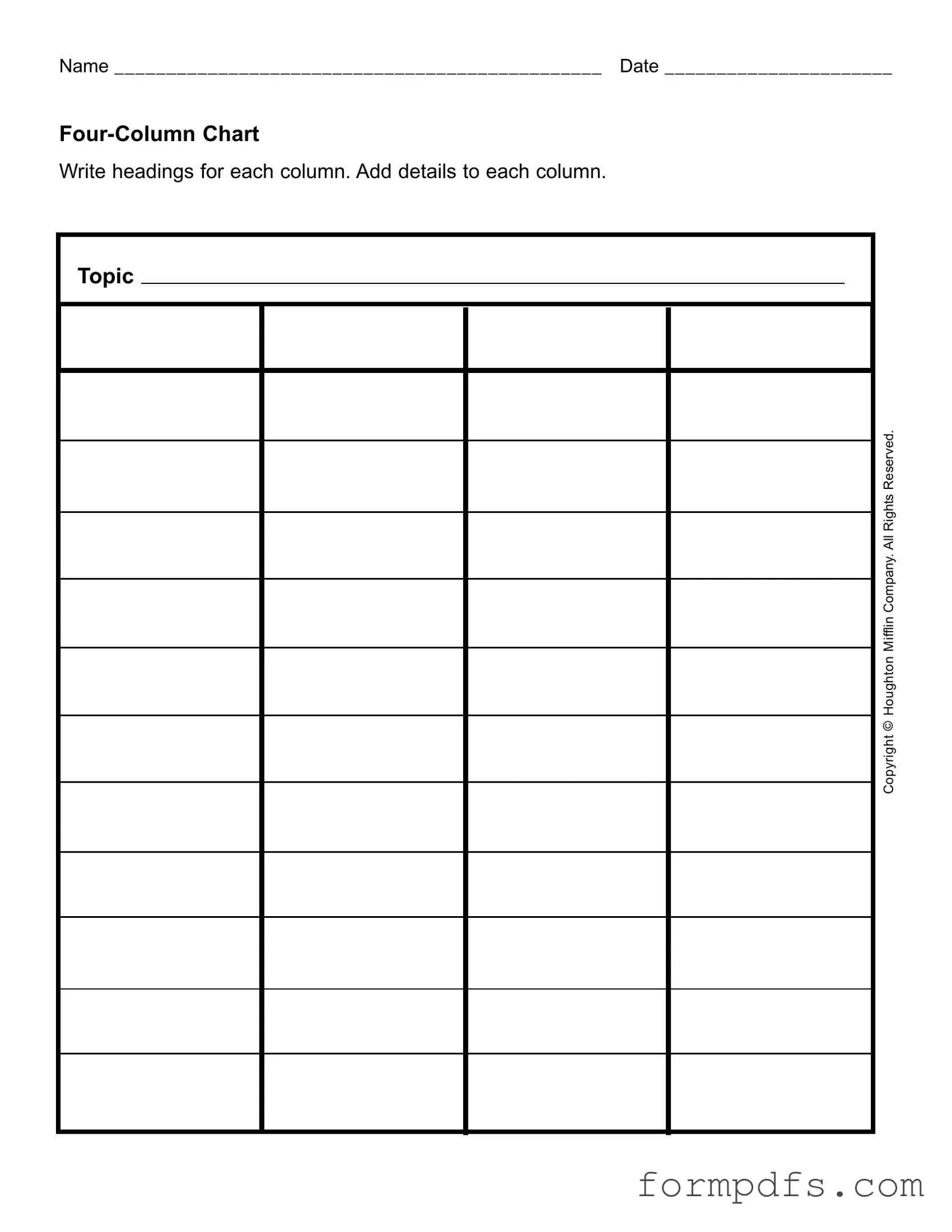What is a Four Column Chart form?
The Four Column Chart form is a structured template designed to help individuals organize information clearly and concisely. It consists of four columns where users can write headings and add corresponding details under each heading. This format is particularly useful for comparing and contrasting different pieces of information or for breaking down complex topics into manageable parts.
How do I use the Four Column Chart form?
To use the Four Column Chart form, start by filling in your name and the date at the top. Next, create headings for each of the four columns based on the information you wish to organize. After establishing your headings, you can add relevant details under each column. This method allows for a visual representation of the information, making it easier to analyze and draw conclusions.
What types of topics are suitable for a Four Column Chart?
A Four Column Chart can be applied to a wide range of topics. It is effective for comparing products, analyzing different viewpoints on an issue, outlining project tasks, or summarizing research findings. Essentially, any situation where you need to categorize and compare information can benefit from this format.
Can I modify the Four Column Chart form?
Yes, the Four Column Chart form is flexible. While it comes with a basic structure, you can adjust the headings and the number of rows as needed. If you find that you require more columns or additional details, feel free to adapt the form to suit your specific needs. Customization can enhance clarity and relevance.
Is there a specific way to fill out the columns?
While there is no strict rule for filling out the columns, it is advisable to maintain consistency in the type of information you include. For instance, if one column contains facts, the others should similarly contain factual information or relevant data. This consistency will enhance the chart's effectiveness and make it easier for readers to follow.
How can a Four Column Chart help in decision-making?
By organizing information into a Four Column Chart, you can visualize the pros and cons of different options side by side. This clarity can facilitate better decision-making, as it allows you to see the relationships between various elements. When faced with choices, having a structured overview can significantly aid in weighing options and making informed decisions.
Can I use the Four Column Chart for team projects?
Absolutely! The Four Column Chart is an excellent tool for team projects. It allows team members to collaboratively input information, share ideas, and outline tasks. By using this chart, teams can ensure that everyone is on the same page and that all aspects of the project are considered and documented.
Where can I find a Four Column Chart form?
Four Column Chart forms can be found in various formats online, including downloadable templates and printable versions. Many educational and organizational websites offer free resources that you can customize. Additionally, you can create your own chart using basic word processing or spreadsheet software.
Are there any tips for effectively using a Four Column Chart?
To maximize the effectiveness of a Four Column Chart, keep your headings clear and concise. Use bullet points for details to enhance readability. Regularly review and update the chart as new information becomes available. Lastly, encourage feedback from others to ensure that the chart remains relevant and useful.
